 Murder in Highbury by Vanessa Kelly
Murder in Highbury by Vanessa Kelly Format: eARC
Source: supplied by publisher via Edelweiss
Formats available: hardcover, ebook, audiobook
Genres: cozy mystery, historical mystery, regency mystery
Series: Emma Knightley Mystery #1
Pages: 400
Published by Kensington on October 22, 2024
Purchasing Info: Author's Website, Publisher's Website, Amazon, Barnes & Noble, Kobo, Bookshop.org, Better World Books
Goodreads
The delightful debut of a Regency historical mystery featuring Jane Austen’s indefatigable Emma Knightley! Perfect for fans of Anna Lee Huber, Darcie Wilde, Claudia Gray, and Stephanie Barron. Less than one year into her marriage to respected magistrate George Knightley, Emma has grown unusually content in her newfound partnership and refreshed sense of independence. The height of summer sees the former Miss Woodhouse gracefully balancing the meticulous management of her elegant family estate and a flurry of social engagements, with few worries apart from her beloved father’s health . . . But cheery circumstances change in an instant when Emma and Harriet Martin, now the wife of one of Mr. Knightley’s tenant farmers, discover a hideous shock at the local church. The corpse of Mrs. Augusta Elton, the vicar’s wife, has been discarded on the altar steps—the ornate necklace she often wore stripped from her neck . . . As a chilling murder mystery blooms and chaos descends upon the tranquil village of Highbury, the question isn’t simply who committed the crime, but who wasn’t secretly wishing for the unpleasant woman’s demise. When suspicions suddenly fall on a harmless local, Emma—armed with wit, unwavering determination, and extensive social connections—realizes she must discreetly navigate an investigation of her own to protect the innocent and expose the ruthless culprit hiding in plain sight.
My Review:
Mrs. Elton was dead, to begin with. And the only person in Highbury who seems to miss her is the local vicar. Then again, that local vicar was her husband, so he’s supposed to miss her. even if the woman had earned the, let’s call it the disregard, of everyone else in town – one way or another.
Honestly, several ways and many others. Mrs. Augusta Elton believed that everyone in Highbury was beneath her, and wasn’t at all shy – in any way – about making that plain.
When her body is discovered on the floor of her husband’s church, with finger-shaped bruises around her neck, blood and brain matter matted in her hair but without the expensive necklace she habitually wore, it’s clear to even the dullest numpty that Mrs. Elton was murdered. Also robbed, but definitely murdered.
The problem in Highbury is that there hasn’t been a murder in decades – and the local coroner and constable ARE both a couple of utter numpties at best, and pompous, self-aggrandizing fools at worst.
However, the corpse of the late, unlamented was discovered by Mrs. Knightley – the former Miss Emma Woodhouse – and her friend Mrs. Martin, the former Miss Harriet Smith. And, while Harriet can be a bit of a widgeon when she’s upset – and discovering a dead body is certainly VERY upsetting – Emma is much too intelligent and level-headed to let the terrible sight in front of her prevent her from investigating the scene of the unprecedented crime.
And Emma Knightley, née Woodhouse, has never, ever been a dullard or a widgeon or a numpty. So, when most of the officials involved in investigating the case – with the obvious exception of Emma’s dear husband, who was, after all, smart enough to marry her in spite of her errors in matchmaking in the Jane Austen book named after her – accuse an oh-so-obviously incorrect person of the murder, Emma is all in on investigating the crime herself.
With, or without, her husband’s approval. But generally – and thankfully for Emma’s wake – with. Allowing Emma to prove, yet again, that there are times when she can be just a bit TOO smart for someone’s own good. And very nearly, her own.
Escape Rating A-: I was honestly surprised at how very much I enjoyed Murder in Highbury. But enjoy it I certainly did, and kept coming back to it over the course of a lazy Sunday because I just couldn’t resist seeing both whodunnit and how Emma managed to investigate the case in spite of a lack of even any of Sherlock Holmes’ forensic methods.
 Part of my trepidation was due to not being an Austenphile. I’m pretty sure I listened to Emma once upon a time, but that would have been 30 years ago. I don’t remember any of the details – but that did not affect my enjoyment of this story one bit. (If you never read Emma, or read it LONG ago and don’t remember those details either, I would recommend looking at a plot summary. The events are still relevant, and the players are the same, so some background is helpful but not required.)
Part of my trepidation was due to not being an Austenphile. I’m pretty sure I listened to Emma once upon a time, but that would have been 30 years ago. I don’t remember any of the details – but that did not affect my enjoyment of this story one bit. (If you never read Emma, or read it LONG ago and don’t remember those details either, I would recommend looking at a plot summary. The events are still relevant, and the players are the same, so some background is helpful but not required.)
The second part of my concern going into the story reflects back on yesterday’s book (and Friday’s a bit, come to think of it), in regards to the difficulty that frequently occurs in female-led historical fiction. Specifically that the protagonist needs to be a woman of her own time and not ours, but must manage to realistically have enough agency to BE the protagonist. Emma manages to walk that line differently from Mabel Canning of the London Ladies’ Murder Club a century later, but manage it she does.
It helps that Emma was known to be high-handed, headstrong and intelligent if often prone to rushing down the wrong path, and she’s still that a year later in this story. Howsomever, while she is not independent in the way that Mabel is, she is allowed to act according to her own nature by the men who do have actual power over her – so she frequently acts first and worries about questions of forgiveness vs. permission later if at all – even as she still sometimes lets her heart overrule her head.
Because we’re in Emma’s head, we get to experience both what is said and done on the outside, as well as her actual, and frequently much less socially acceptable, thoughts on the inside. The men in charge absolutely ARE idiots, and we get to cringe right along with her.
Above all, and in spite of the murder, or on top of it, underneath it and all around it, Murder in Highbury is still just the kind of ‘comedy of manners’ that infused Jane Austen’s work and has made it utterly timeless. Human nature hasn’t changed in a mere two centuries, and the exposure and gentle ribbing of the nature of people in Highbury rings true in spite of the murderer and his (or her!) victim in their midst.
Or perhaps even more so because of it. Making Murder in Highbury a surprisingly charming and utterly delightful read. It looks like Murder in Highbury is the first in a cozy historical mystery series. I hope so, because I’d be delighted to return to Highbury to watch Emma investigate another case!

 Murder at King’s Crossing (Wrexford & Sloane, #8) by
Murder at King’s Crossing (Wrexford & Sloane, #8) by  The difference between “I’ve got a bridge to sell you” and “I’ve got revolutionary plans for building bridges to sell you” should be the width of a chasm – but it’s not nearly as far as one would expect in this latest entry in the
The difference between “I’ve got a bridge to sell you” and “I’ve got revolutionary plans for building bridges to sell you” should be the width of a chasm – but it’s not nearly as far as one would expect in this latest entry in the  Escape Rating B: It took the longest time for this particular entry in the series to grab me. Once it finally did, I was hooked again, but it took longer than usual. It was probably a combination of not being quite the right book at the right time, the domesticity of the early scenes (which I love but not quite so thoroughly front-loaded) AND the fact that the characters were flailing around to get even a glimpse of a direction for a bit longer than is usual for this generally über-competent crew.
Escape Rating B: It took the longest time for this particular entry in the series to grab me. Once it finally did, I was hooked again, but it took longer than usual. It was probably a combination of not being quite the right book at the right time, the domesticity of the early scenes (which I love but not quite so thoroughly front-loaded) AND the fact that the characters were flailing around to get even a glimpse of a direction for a bit longer than is usual for this generally über-competent crew. Follow the Stars Home by
Follow the Stars Home by 
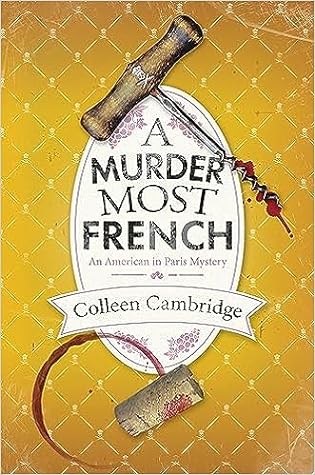 A Murder Most French (American In Paris Mystery, #2) by
A Murder Most French (American In Paris Mystery, #2) by 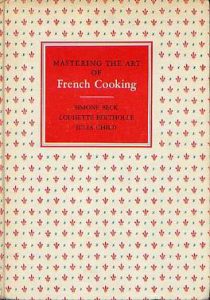 Julia Child is too busy learning French cooking, living her larger-than-life life in Paris AND at the beginning of writing her masterpiece,
Julia Child is too busy learning French cooking, living her larger-than-life life in Paris AND at the beginning of writing her masterpiece, 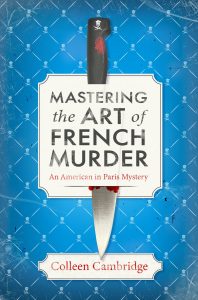 Escape Rating A+: If you loved the first book in this series – and who didn’t? – you will run, not walk to get this second book because it’s every bit as charming as the first. If you still need a bit of convincing, I’m going to get right to that.
Escape Rating A+: If you loved the first book in this series – and who didn’t? – you will run, not walk to get this second book because it’s every bit as charming as the first. If you still need a bit of convincing, I’m going to get right to that.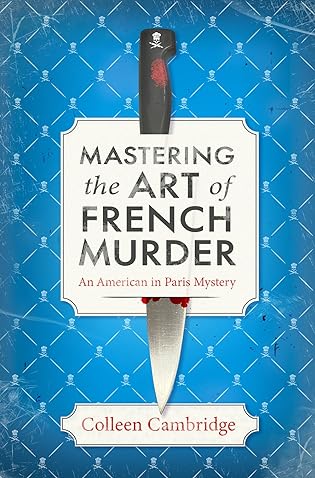 Mastering the Art of French Murder (An American In Paris, #1) by
Mastering the Art of French Murder (An American In Paris, #1) by  And then there’s Julia Child herself, much too boisterous to ever be considered merely a secondary character and certainly not a sidekick, who draws readers in with her true-to-life mannerism, her real, documented history working for the OSS in the war, and her larger-than-life presence on so many wonderful pages of this story.
And then there’s Julia Child herself, much too boisterous to ever be considered merely a secondary character and certainly not a sidekick, who draws readers in with her true-to-life mannerism, her real, documented history working for the OSS in the war, and her larger-than-life presence on so many wonderful pages of this story.
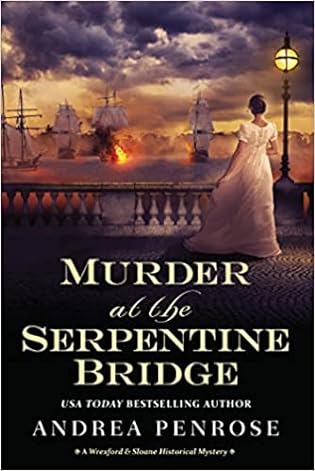 Murder at the Serpentine Bridge (Wrexford & Sloane, #6) by
Murder at the Serpentine Bridge (Wrexford & Sloane, #6) by  As the previous book in this series,
As the previous book in this series, 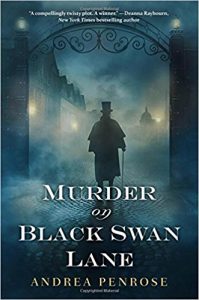 Escape Rating A: This was the right book at the right time, and I clearly waited enough time after
Escape Rating A: This was the right book at the right time, and I clearly waited enough time after  Murder at the Royal Botanic Gardens (Wrexford & Sloane, #5) by
Murder at the Royal Botanic Gardens (Wrexford & Sloane, #5) by 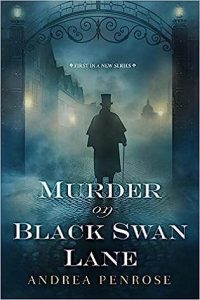 This fifth book in the
This fifth book in the 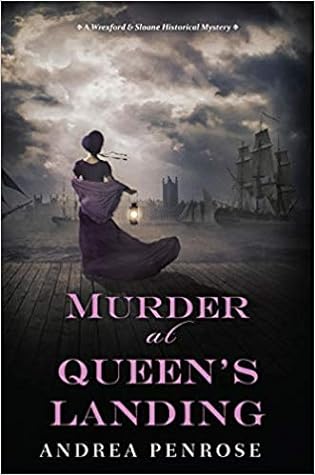 Murder at Queen's Landing (A Wrexford & Sloane Mystery, #4) by
Murder at Queen's Landing (A Wrexford & Sloane Mystery, #4) by 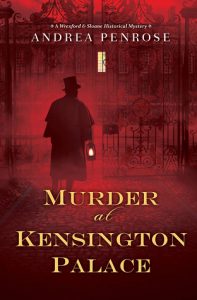 Escape Rating A: You wouldn’t think that it would be possible to make what is ultimately a financial crime be all that fascinating, but the machinations of arbitrage that turn out to be the center of this criminal conspiracy are both easy enough to follow and absolutely deadly in their application.
Escape Rating A: You wouldn’t think that it would be possible to make what is ultimately a financial crime be all that fascinating, but the machinations of arbitrage that turn out to be the center of this criminal conspiracy are both easy enough to follow and absolutely deadly in their application.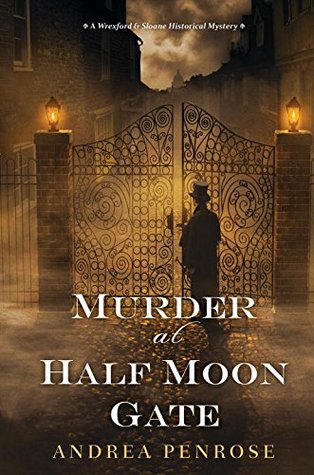 Murder at Half Moon Gate (A Wrexford & Sloane Mystery) by
Murder at Half Moon Gate (A Wrexford & Sloane Mystery) by 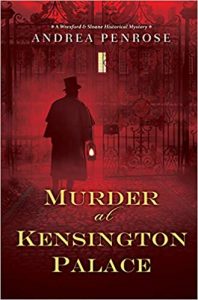 At the same time, this series has also brought other historical mysteries to mind, especially
At the same time, this series has also brought other historical mysteries to mind, especially 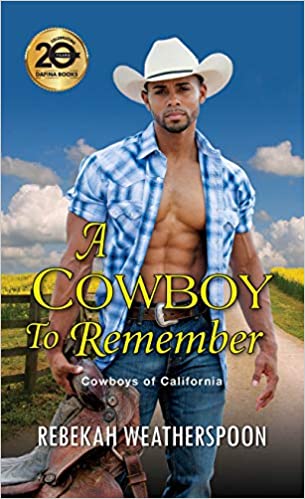 A Cowboy to Remember (Cowboys of California #1) by
A Cowboy to Remember (Cowboys of California #1) by 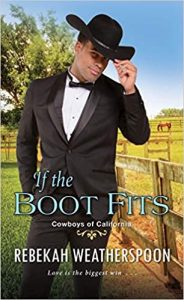 A big part of the charm of this story was the way that Jesse and Zach’s family scooped Evie up and brought her back home to the place she’d grown up and the family that helped raise her. The relationships among the Pleasant family were beyond pleasant, and their re-adoption of Evie was heartwarming, particularly the re-kindling of the motherly/grandmotherly relationship between Jesse and Zach’s grandmother Leona and Evie. A relationship that Evie needed quite frankly even more than she needed the romance – and she needed that pretty damn bad.
A big part of the charm of this story was the way that Jesse and Zach’s family scooped Evie up and brought her back home to the place she’d grown up and the family that helped raise her. The relationships among the Pleasant family were beyond pleasant, and their re-adoption of Evie was heartwarming, particularly the re-kindling of the motherly/grandmotherly relationship between Jesse and Zach’s grandmother Leona and Evie. A relationship that Evie needed quite frankly even more than she needed the romance – and she needed that pretty damn bad.